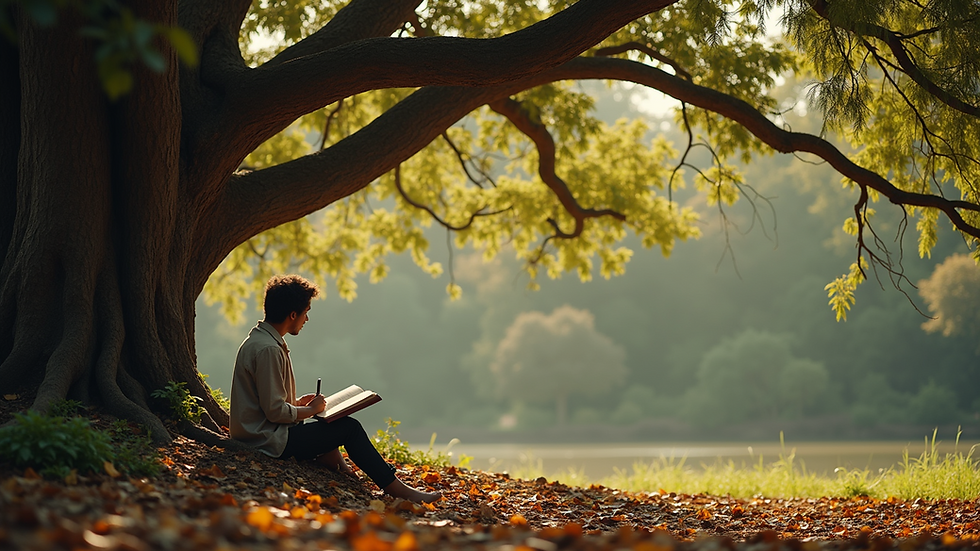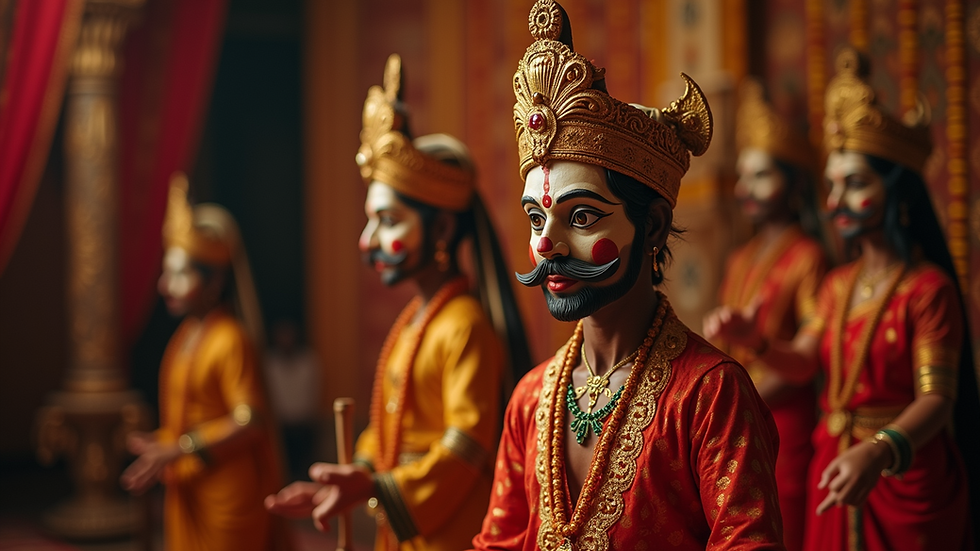Exploring the Richness of Indian Traditional Stories
- SaY India

- Sep 15
- 3 min read
India is a land of stories. From the bustling streets of Delhi to the quiet villages of Kerala, tales have been passed down through generations. These stories are not just entertainment; they are a window into the soul of a culture that is vibrant, diverse, and ancient. Have you ever wondered how these stories have survived the test of time? Or why they still captivate young and old alike? Let me take you on a journey through the enchanting world of Indian oral traditions and the timeless narratives they carry.
The Magic of Indian Oral Traditions
Oral traditions in India are more than just spoken words. They are a living, breathing heritage. Imagine sitting around a fire, the night sky above, as an elder weaves a tale that sparks your imagination. This is the essence of Indian oral traditions. These stories are told in many languages and dialects, each adding its unique flavour.
What makes these traditions so special? It’s their ability to adapt and evolve. Stories change slightly with each telling, reflecting the values and concerns of the time. This dynamic nature keeps them relevant and engaging. Plus, oral storytelling is interactive. Listeners become part of the story, responding with laughter, gasps, or questions.

The Role of Indian Oral Traditions in Preserving Culture
Indian oral traditions serve as a cultural archive. They preserve history, morals, and social norms. Through stories, children learn about bravery, kindness, and wisdom. These tales often feature gods, heroes, animals, and everyday people, making them relatable and memorable.
For example, the Panchatantra stories use animals to teach life lessons. These fables have traveled beyond India, influencing storytelling worldwide. Similarly, the epics Ramayana and Mahabharata are recited in homes and temples, connecting listeners to their spiritual roots.
If you want to keep these traditions alive, consider sharing stories in your family or community. Encourage elders to tell their favourite tales. Record these sessions if possible. This simple act helps preserve a treasure trove of knowledge for future generations.

What is the traditional storytelling of India?
Traditional storytelling in India is a rich tapestry woven with music, dance, and drama. It is not just about words but also about performance. Storytellers use gestures, facial expressions, and songs to bring stories to life. This immersive experience captivates audiences and makes the stories unforgettable.
Different regions have their unique storytelling styles. In Rajasthan, the Bhopa community performs epic tales with music and puppetry. In Kerala, Kathakali combines dance and drama to narrate mythological stories. These art forms are more than entertainment; they are rituals that connect people to their heritage.
Storytelling sessions often happen during festivals or special occasions, creating a sense of community. They are a way to pass down wisdom and keep cultural identity strong. If you ever get a chance to witness one, don’t miss it. The energy and passion are truly inspiring.

How to Engage with Indian Traditional Stories Today
In today’s digital age, you might wonder if these stories still hold a place. The answer is a resounding yes! Platforms like Spin A Yarn India are revolutionising how we share and preserve indian traditional stories. They invite people from all walks of life to contribute their tales in indigenous languages, ensuring these narratives thrive.
Here are some ways you can engage with these stories:
Listen actively: Attend storytelling events or watch performances online.
Read and share: Explore books and websites dedicated to Indian folklore.
Participate: Contribute your own stories or those from your family to platforms like Spin A Yarn India.
Learn languages: Understanding regional languages deepens your connection to the stories.
Create: Use art, writing, or digital media to reinterpret traditional tales.
By doing this, you become part of a living tradition, helping to keep it vibrant and relevant.
The Future of Indian Oral Traditions
The future of Indian oral traditions looks bright, thanks to technology and community efforts. Younger generations are embracing their heritage with pride. Storytelling apps, podcasts, and social media groups are making it easier to access and share these narratives.
But the heart of this tradition remains the same - human connection. Whether it’s a grandmother telling a bedtime story or a community gathering around a fire, the magic lies in the shared experience. So, why not start your own storytelling circle? Invite friends and family, pick a story, and watch the magic unfold.
Remember, every story you share is a thread in the vast tapestry of Indian culture. Together, we can ensure these stories continue to inspire and educate for generations to come.
Exploring Indian oral traditions is like opening a treasure chest filled with wisdom, adventure, and heart. Dive in, listen closely, and let these stories enrich your life. After all, stories are the threads that connect us all.







Comments